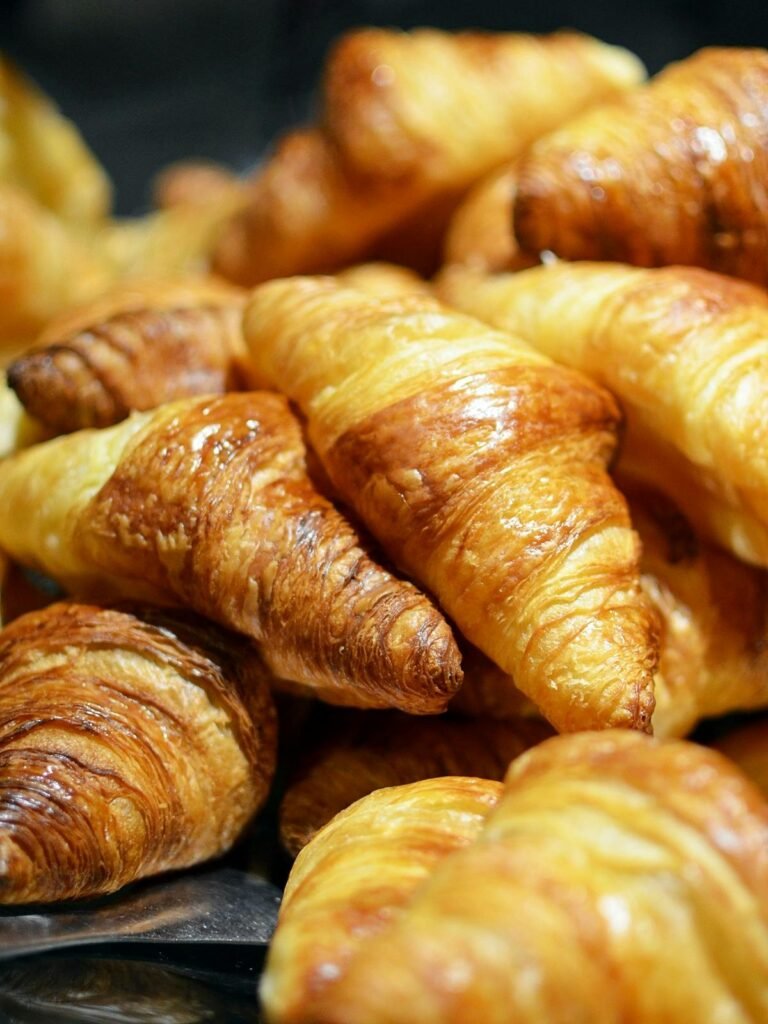Table of Contents

Introduction to French Markets
French markets hold a distinctive charm that sets them apart from markets in other parts of the world. Steeped in history and vibrant in their offerings, these markets encapsulate the essence of French culture, embodying the traditions and tastes that have evolved over centuries. Unlike the convenience-focused supermarkets, French markets offer an immersive, sensory-rich experience where each stall tells a story through its curated selection of goods.
Visitors to French markets can expect an array of fresh produce that changes with the seasons, ensuring the freshest and most flavorful ingredients. From crisp lettuces and succulent tomatoes in the summer to robust root vegetables in the winter, the bounty is plentiful and varied. Artisanal goods are another hallmark, with vendors offering hand-crafted cheeses, freshly baked breads, and intricately made pastries, each reflecting regional techniques and ingredients.
One of the unique aspects of French markets is their focus on regional specialties. Each region of France boasts its culinary treasures, from the lavender honey of Provence to the oysters from Brittany, providing a unique opportunity for both locals and tourists to savor local flavors. Moreover, the bustling atmosphere, filled with the chatter of vendors and the aroma of fresh herbs and spices, makes visiting these markets a sensory adventure.
Beyond the food items, French markets often feature stalls selling a variety of other goods, including handmade crafts, vintage clothing, and antiques. These items add to the market’s intrinsic charm, offering a glimpse into the artisanal skills that are so deeply ingrained in French culture. Whether you’re looking for a one-of-a-kind souvenir or a special ingredient for your next meal, French markets offer a treasure trove of local finds.
This rich cultural tapestry of French markets sets the stage for an exploration of their distinct features and the treasures they hold, which we will delve into in the following sections.
French markets have long been the epicenter of communal and economic activities, with their origins tracing back to medieval times. Historically, these markets functioned as vital hubs where individuals from various regions converged to trade a myriad of goods, ranging from local produce and meats to textiles and spices. The open-air atmosphere, with rows of colorful stalls and the aromatic symphony of fresh ingredients, encapsulated more than just commerce; it fostered social connections and a sense of community among the French populace.
The medieval period marked the crystallization of French markets as structured entities, often facilitated within town squares or along important trade routes. These markets were integral to medieval towns and cities, serving not just as centers of trade but also as focal points of public life, where news was shared, and communal bonds were reinforced. With regular market days enshrined by royal decrees, markets became a predictable fixture in the schedule of everyday life.
As France transitioned through various historical epochs, the French markets evolved in response to socio-economic transformations and cultural shifts. The Renaissance period, characterized by a resurgence of art and culture, saw markets become even more diverse with an influx of exotic goods from the New World, broadening the French palate and expanding the variety of items available. The hustle and bustle of the markets reflected the dynamic changes within society, mirroring the nation’s growth and increasing sophistication.
During the Industrial Revolution, French markets underwent another significant transformation. Urbanization led to the establishment of more permanent indoor markets, often monumental structures such as Paris’s famed Les Halles, which stood as the “Belly of Paris.” Such developments signified a more organized approach to market life, integrating advancements in infrastructure and sanitation.
Today, French markets remain quintessential to France’s cultural and social fabric. They have adapted to contemporary demands while preserving their historical charm. Whether in the sprawling markets of Provence or the bustling urban marchés of Paris, these markets continue to be vibrant spots where tradition meets modernity, embodying centuries of evolution.
Types of French Markets
France, renowned for its culinary and cultural heritage, boasts an array of markets that reflect the diverse tapestry of its local life. Among these, three primary types stand out: farmers’ markets, flea markets, and specialty markets, each offering a unique experience and a glimpse into the soul of French daily life.
Farmers’ Markets
Farmers’ markets, or “marchés en plein air,” are quintessentially French and pivotal to the local food culture. These bustling hubs of activity typically take place in open-air spaces and feature an abundance of fresh, locally-sourced produce. From vibrant vegetables and fruits to artisanal cheeses, charcuterie, and freshly baked bread, these markets are a gastronomic delight. Farmers’ markets are not only a feast for the senses but also a significant contributor to the local economy, supporting small farmers and artisanal producers.
Flea Markets
Flea markets, known locally as “marchés aux puces,” are treasure troves of antiques, vintage items, and second-hand goods. These markets, such as the famous Marché aux Puces de Saint-Ouen in Paris, attract collectors, bargain hunters, and curious tourists alike. With stalls filled with everything from antique furniture and old books to rare collectibles, flea markets offer a fascinating journey through history. They play a crucial role in preserving cultural heritage and provide a sustainable shopping option, emphasizing reuse and recycling.
Specialty Markets
Specialty markets cater to specific interests, ranging from flower markets to fish markets, and even holiday-themed markets. For instance, the flower market on Île de la Cité is a fragrant oasis in the heart of Paris, while the seafood markets in coastal towns serve the freshest catch of the day. Christmas markets, or “marchés de Noël,” transform towns and cities into festive wonderlands with handcrafted gifts, local delicacies, and seasonal treats. These markets enhance community spirit and celebrate specific aspects of French culture and cuisine.
Whether you’re exploring a local farmers’ market, hunting for unique finds at a flea market, or enjoying the charm of a specialty market, French markets offer a rich and immersive experience, deeply embedded in the local way of life.

Regional Specialties by Market
French markets are renowned for showcasing the diverse, rich tapestry of regional specialties that define the culinary mosaic of France. Each region of the country brings its unique flavors and local products, making these markets a treasure trove for enthusiasts seeking authentic French experiences. Let’s explore the distinctive offerings in some of France’s primary regions, including Provence, Brittany, and Normandy.
In Provence, the markets are celebrated for their vibrant colors and aromatic fragrances. Visitors will discover an abundance of fresh herbs, such as thyme, rosemary, and lavender, used prolifically in Provençal cuisine. The region’s olive oils are another highlight, characterized by their rich, fruity flavors. Additionally, the Calissons d’Aix, a delightful confection made with ground almonds and candied melon, are a Provencal specialty not to be missed. Provençal markets also boast a selection of fine wines, with rosé being particularly prominent thanks to the region’s sunny climate.
Moving to Brittany, the markets here offer a distinct maritime flair. Being a coastal region, Brittany is celebrated for its seafood, with oysters, mussels, and scallops taking center stage. The region is also famed for its salted butter and a variety of dairy products, including the creamy Bordier butter. Crêpes and galettes are staple items, often prepared fresh at the market stalls, showcasing Breton culinary traditions. Apple’s abundant growth in Brittany makes apple cider another regional favorite, often fermented and served in rustic earthenware cups.
Normandy, known for its lush landscapes and fertile soil, presents markets rich in dairy products and charcuterie. Among the regional specialties, the famed Camembert and Pont-l’Évêque cheeses stand out, offering a creamy and pungent taste that epitomizes Norman dairy excellence. The markets also feature an array of apples, which are integral to local delicacies like cider and the celebrated Calvados apple brandy. An additional delicacy is the Andouille de Vire, a smoked sausage that reflects the region’s charcuterie prowess, often enjoyed with a slice of hearty bread.
Exploring French markets offers a culinary journey through the country’s regions, each with its unique specialties. From Provence’s aromatic herbs and wines, Brittany’s maritime delicacies, to Normandy’s cheeses and charcuterie, these markets are the lifeblood of France’s gastronomic heritage.
Tips for Shopping at French Markets
Visiting French markets can be a delightful experience, offering a sensory feast of fresh produce, vibrant flowers, artisanal breads, and gourmet cheeses. To make the most of your visit, consider these valuable tips. Understanding the rhythm of the market and adhering to local customs will enhance your experience, allowing you to shop like a seasoned local.
The best time to visit a French market is early in the morning. Arriving around 8 or 9 AM will afford you the freshest selection of goods. Early visits also provide the opportunity to interact with vendors before the market gets crowded. Conversely, if you’re looking for bargains, the final hour before closing can sometimes offer deals as vendors look to clear their remaining stock. This approach, however, comes with the risk of limited choices.
Language can be a barrier, but mastering a few essential phrases goes a long way. Simple expressions like “bonjour” (hello), “s’il vous plaît” (please), “merci” (thank you), and “combien ça coûte?” (how much does this cost?) can make interactions smoother and more pleasant. Vendors often appreciate attempts to speak their language, fostering an amicable shopping experience.
When it comes to selecting produce, freshness is key. Look for vibrant colors, firm textures, and fragrant smells as indicators of quality. Handling products gently and respectfully is crucial; locals typically avoid squeezing or prodding items excessively. For perishable goods, trust your senses and, when in doubt, do not hesitate to ask vendors for recommendations or to sample a taste.
Understanding etiquette can help visitors blend in seamlessly. Politeness is revered; always greet vendors with a warm “bonjour” before inquiring about products. It’s also customary to wait your turn patiently, even if there’s no formal queuing system in place. Remember to bring your own reusable bags, as it’s both eco-friendly and a common practice among locals. Finally, while haggling is rare in French markets, showing appreciation for the craftsmanship and quality of goods can sometimes lead to a friendly discount.
By following these tips, you’ll be prepared to navigate French markets with confidence and enjoy a truly authentic shopping experience. These insights not only enhance the quality of your purchases but also help create meaningful connections with the local community.
Top Must-Visit Markets in France
France, known for its culinary excellence and vibrant culture, boasts a plethora of markets each with its unique charm and offerings. Among these, the Marché d’Aligre in Paris stands out as a quintessential French market. Located in the 12th arrondissement, it offers a tantalizing mix of fresh produce, antiques, and gourmet food. Highlights include the bustling atmosphere, the array of fresh seafood, and the cheese stalls brimming with local varieties. Key vendors such as the celebrated Le Baron Rouge wine bar add a touch of authenticity, making it a favorite for both locals and visitors. The market operates daily, with Thursdays and Sundays being particularly lively.
Moving south to the picturesque city of Cannes, the Marché Forville should be at the top of any market lover’s list. Nestled in the heart of the city, this market is a sensory delight with its colorful array of fruits, vegetables, and flowers. Special mentions go to the stalls offering freshly caught seafood and the local specialties like socca, a savory chickpea pancake. The market also hosts seasonal events and festivals, enhancing the overall experience. Open every day except Monday, it’s a perfect place to experience the essence of French Riviera markets.
In the culinary capital of Lyon, Les Halles de Lyon-Paul Bocuse is a landmark market named after the legendary chef Paul Bocuse. It represents the epitome of French gastronomy with more than 50 vendors offering a myriad of gourmet products. From artisan bread and charcuterie to exquisite pastries and world-renowned cheeses, this market is a gastronomic paradise. Noteworthy vendors include the famous Mère Richard for cheeses and Sibilia for saucissons. Open every day except Mondays, this market offers a luxurious taste of Lyon’s rich culinary heritage.
Whether you are a food enthusiast, an antique lover, or simply a traveler eager to immerse yourself in local culture, these French markets offer an unparalleled experience. Each market, with its unique charm and specialties, encapsulates the vibrant essence of France, making them indispensable destinations for any visitor.
Seasonal Delights and Festivities
The vibrancy of French markets extends beyond their daily offerings, with each season bringing a unique array of produce and celebrations. In spring, the stalls are a symphony of colors, showcasing asparagus, artichokes, and strawberries. Vendors display their produce with pride, celebrating the arrival of warmer days and the blossoming of local agriculture.
Summer markets burst with a bounty of sun-ripened tomatoes, peaches, and an array of fragrant herbs. During this season, markets not only serve as a place to purchase fresh ingredients but also as a venue for local food fairs. These fairs are celebrated with enthusiasm, featuring regional specialties like Provençal ratatouille, Breton crepes, and seafood festivals along the coastal regions.
As autumn approaches, French markets transform once again, offering a rustic selection of pumpkins, chestnuts, and a variety of mushrooms, including the prized truffle. The truffle season is celebrated with dedicated markets and festivals, where chefs and gastronomes gather to sample and purchase this culinary treasure. Wine harvest festivals are also prominent in regions like Burgundy and Bordeaux, marking a time of jubilation and appreciation for the year’s grape yield.
Winter brings its own charm to French markets, particularly with the arrival of Christmas markets. These festive gatherings are a highlight of the winter season, featuring stalls adorned with twinkling lights and offering a plethora of seasonal treats, from mulled wine and gingerbread to handcrafted gifts and decorations. Strasbourg, in particular, is renowned for its picturesque and extensive Christmas market, drawing visitors from across the globe.
French markets, therefore, are not mere shopping venues; they are dynamic reflections of the changing seasons and the cultural festivities that accompany them. Each visit is an opportunity to experience the rich tapestry of French gastronomy and tradition, harmoniously intertwined with the rhythms of nature and community celebrations.
Sustainable and Ethical Shopping
Exploring French markets offers more than just a sensory delight; it provides an opportunity to embrace sustainability and ethical shopping practices. Engaging in these practices can significantly enhance your market experience while contributing positively to the environment and local communities. Here are a few insights on how to make environmentally friendly and ethical choices at French markets.
Firstly, purchasing local products is a key component of sustainable shopping. French markets are brimming with local, seasonal produce that not only tastes better but also supports local farmers. By choosing these products, you reduce the carbon footprint associated with long-distance food transportation and promote the local economy. You will often find a variety of fresh fruits, vegetables, cheeses, and breads that are unique to the region, bringing an authentic taste of France to your kitchen.
In addition to buying local, opting for organic products is another vital step. Organic farming practices avoid synthetic fertilizers and pesticides, contributing to healthier ecosystems and reduced pollution. Many French markets feature stalls with certified organic produce marked by the “AB” (Agriculture Biologique) label, indicating adherence to stringent organic farming standards. By selecting these products, you are not only ensuring a healthier diet for yourself but also promoting sustainable agriculture.
Fair-trade products available at French markets also align with ethical shopping principles. Choosing fair-trade items such as coffee, chocolate, and textiles ensures that farmers and artisans receive fair wages and work under decent conditions. Supporting these products helps combat global inequities and encourages sustainable practices in developing countries.
Reducing plastic use is another crucial aspect of sustainable shopping. French markets are known for their array of fresh, unpackaged goods, allowing you to avoid single-use plastics. Bring your reusable bags, containers, and jars to the market to minimize waste and facilitate a more eco-friendly shopping experience. Many vendors are happy to accommodate these requests, contributing to the overall reduction of plastic pollution.
Lastly, patronizing small-scale farmers and artisans is a meaningful way to promote ethical consumption. These vendors often use traditional, sustainable methods to produce their goods, and your support helps preserve these valuable practices. Handcrafted items, local specialties, and artisanal foods found at French markets not only provide unique and high-quality products but also sustain the livelihoods of local producers.
By integrating these sustainable and ethical shopping tips, you can enjoy the rich offerings of French markets while making a positive impact on the environment and society. Through mindful choices, every visit to these vibrant markets becomes an opportunity to support sustainability, fairness, and community well-being.






